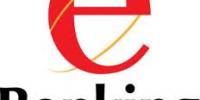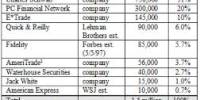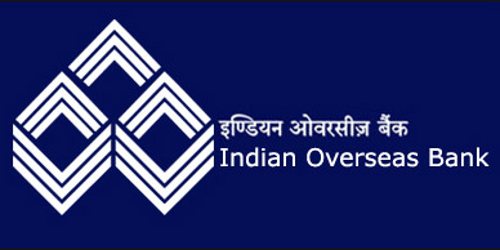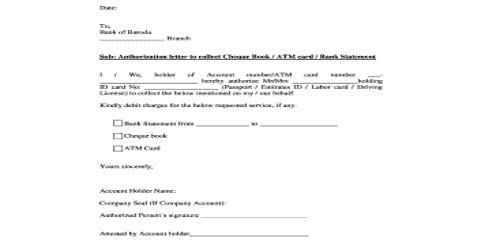SME Loan
Small and medium Enterprise Financing contributes to a positive impact in the economy of the country. In developing countries like Bangladesh, the demand for expanding SME business is increasing day by day. Even the donors are also encouraging to expand the volume of such kinds of business to face the challenge of poverty and to create employment opportunities in the country. Rupali Bank Ltd. also play a vital role in this sector and can help to promote the expansion of SME business in the country.
Activities & Achieving of SME in 2011
- SME circular issued for extending SME
- Publishing loan policy guideline brochures and booklest encompassing the procedure for entrepreneurs seeking loan, loan proposal preparation, sanction and disbursement of SME loan.
- Field level executive and officers have been empowered for approval loan within short time
- Young officers have been trained in SME program and services to proper entrepreneurs
- Formation of SME monitoring cell in all divisional workstation and corporate branches for running SME activities
- In the year 2011 TK 274.52 crore has been disbursed to 2287 clients
- Project supported by Rupali’s SME financing support are supposed to generate 6610 permanent and 3018 temporary employment position
- Successful participation of RBL on several SME fair conducted by NASIB in collaboration with Bangladesh Bank
Target for SME loan disbursement in the year 2012
- The SME sector loan disbursement target set by Rupali’s board for 2012 is taka725 crore
- The plan aim at promoting women entrepreneurs increasing loan distribution to the manufacturing sector and reaching the target through prompt activities financial solvency of the low income peoples alleviate poverty and increase employment with the help of SME
- Strengthening 45 clusters for cluster based financing development of f sustainable and competent opportunities through technology development and expansion development of entrepreneurs experience reducing risk of loan and in general starting from introduction of product development
- Planning for special upgraded training for development of bank officials in the year 2012
There are four Product under SME financing.
These are
- Sahaj Rin
- Sulav Rin
- Businessman Rin
- Majari (medium) Rin
Sahaj Rin
- Loan facilities up to 2.00 (two) lac
- Proprietorship and partnership firm only included in this scheme
- Loan will be approved by branch manager (But loan information must be furnished by weekend)
- Personal guarantee of a solvent family member and 3rd party guarantee of an acceptable individual or collateral security of equal value of loan will be taken against this loan.
- A plan about the use of loan will be taken by borrower. And how much worker / employee (Full time or part time) will be employed should be mentioned in this plan.
- Post dated cheques equivalent to loan installment with interest and one cheque covering full loan from borrower.
- Loan processing fee TK= 1000/=(Nonrefundable)
- Trade license, photograph, partnership deed (if applicable) stock report, Income& Expenditure statement will be taken from borrower.
- Term loan (1-3) year by monthly or quarterly installment and exiting rules will be applicable in case of working capital / continuous loan.
- Interest rate 15 % (changeable), 1% rebate in case of regular payment.
- Interest rate 14% in following specialized sectors.
- Solar installation.
- Bio-gas based project.
- Agro – based project.
- Skillness (at least three months Training from government approved institution
- Women enterprenure can get loan up to10,00,000(ten lac)without any security& interest rate is 14%
Sulav Rin
- Loan facilities up to 5.00 (five) lac
- Proprietorship & partnership firm included in this scheme. Besides professionals (engineer, doctors, lawyers etc.) will be given priority.
- Inially branch manager will approve and Zonal head will counternigh after verification
- Personal guarantee of a solvent family member and Declaration of asset (equimlent to loan amount) must be given. 3rd party guarantee of an acceptable individual to Bank will be taken.
- A plan about the use of loan will be taken by borrower. And how much people (full time or part time) will get employment opportunity should be mentioned in plan.
- Post dated cheques equivalent to loan installment with interest and one cheque covering full loan will be taken from borrower.
- Loan processing fee TK = 5000/=(Nonrefundable)
- Trade license, Rupali Bank account, photograph, partnership deed (if applicable) stock report will be taken
- Term loan (1-4) years by monthly or quarterly installment and exiting rules will be applicable in case of working capital / continuous loan.
- Interest rate 15 % (changeable), 1% rebate in case of regular payment.
- Interest rate 14% in following specialized sectors.
- Solar installation.
- Bio-gas based project.
- Agro – based project.
- Female entrepreneur will get 10.00 lac loan facilities under this scheme by complying same formalities.
Business Rin
- Loan facility up to 3 (three) crore.
- Approval authority
- Managing director : Above 30.00 to 3.crore
- DGM (Zonal head): Upto 30.00 lac
- AGM: Upto 20.00 lac
- Personal guarantee of a solvent family member and collateral security of forced sole Value equivalent to loan.
- A detailed plan about the objective, uses and payment of loan must be submitted. How much people will get employment opportunity (full time or part time) must be mentioned in this plan.
- Post dated cheques equivalent to loan installment with interest and one cheque covering full loan will be taken from borrower.
- Loan processing fee TK = 10000 /= (Nonrefundable)
- Business license, trade license, Rupali Bank account, photograph, partnership deed (if applicable) Income expenditure statement, stock report, and personal networth statement will be furnished.
- Interest rate 15 % (changeable), 1 % rebate in case of regular payment
- Interest rate 14% in following specialized sectors.
- Solar installation.
- Bio-gas based project.
- Agro – based project.
Mazari (medium) Rin
- Loan facility above 3.00 core to 20.00 core.
- Approval authority – board of directors
- Personal guarantee of a solvent family member and collateral security of force sale value 1:1.25]
- A plan about the objective, use and payment of loan will be taken from borrower. How much people (full time or part time) will work in this project must be mentioned in this plan.
- Post dated cheques equivalent to loan installment with interest and one cheque covering full loan will be taken from borrower.
- Loan processing fee TK = 15000 /=(Nonrefundable)
- Business license, trade license, Rupali Bank account, photograph, partnership deed (if applicable), profit and loss statement, memorandum or article of association, audited balance sheet, financial statement, stock report, and other related paper will be furnished.
- In case of term loan period will be 1 – 5 years by monthly or quarterly installment and in case of working capital, existing rules will be applicable.
- Interest rate 15 % (changeable), 1 % rebate in case of regular payment.
- Interest rate 14% in following specialized sectors.
- Solar installation.
- Bio-gas based project.
- Agro – based project.
Household loan (consumer financing)
People of developing countries like Bangladesh earn low income. They can not purchase household item like TV, refrigeration, Air cular etc. in spite of being necessary. For this reason they cannot improve their life standard. In order to help people specially limited income service holder to buy household item Rupali Bank Ltd. introduce this loan scheme.
Objectives of scheme
To help people / service holder in buying house item.
To help people / service holder in improving life standard.
Qualification of applicant
Employee of government institution, semi government, sector, corporation and autonomous body, state owned commercial banks and insurance company, universities, government college, government school and madrasha , teacher of government primary, member of armed forces (military, BGB, Police and Ansar)
Besides Executives of NGOs, professional (doctor, engineer, lawyers, chartered accountant, journalist etc.) and business.
Age of applicant: Age limit will be from 21 to 55 years.
Usages of loan
Only in buying household item- such as refrigerator, TV, DVD, motorcycle, washing machine, ac, sewing machine, personal computer.
Type of household item & highest loan limit
Sl. No. | Types of item | Highest limit | Down payment | Interest | Period |
| 1 | Refrigerator | 25000 | 25% | 16% | 2 years |
| 2 | Color TV | 20000 | 25% | 16% | 2 years |
| 3 | Motorcycle, | 50000 | 25% | 16% | 2 years |
| 4 | Personal computer | 75000 | 25% | 16% | 2 years |
| 5 | Washing Machine | 20000 | 25% | 16% | 2 years |
| 6 | Furniture | 36000 | 25% | 16% | 2 years |
| 7 | Air Cooler | 30000 | 25% | 16% | 2 years |
Principles of Borrower Selection
Incase of borrower mentioned in 2.1 serial, personal guarantee of employer/departmental head must be taken, loan proposal will be considered according to their recommendation and guarantee. Personal guarantee from an acceptable person to bank in case of borrower mentioned in 2.2.
Rules of application
Applicant must apply with prescribed bank form mentioning name, address, monthly salary etc. At least 3 quotations of desired articles will be submitted with application. Price of articles will be paid to seller/ supplier through bank draft/cheque/pay order. Cash memo will be in the name of bank and it will be changed in favour of client after realizing payment of bank.
Loan approval power
Designation | Up to TK. |
| Manager (SPO) | 0.50 Lac |
| Manager or Zonal Head (AGM) | 0.75 Lac |
| DGM | 1.00 Lac |
Security
- Letter of hypothecation and undertaking
- Employer’s undertaking in case of service holder
- DP note $ C.F. 11
Rules
- Installment size should not above 50% of monthly salary
- 1% rebate in case of timely payment
- Any damage or repairing of product must be born by borrower. Registration cost or license of product will be at the expense of borrower.
- Only borrower will be articles/product, he has no right to rent or hand over product without bank permission.
Export financing
An exporter requires finance at two stages, namely-
- Pre – shipment stage &
- Post – shipment stage
- We may classify export finance into two categories
- Pre – shipment credit &
- Post – shipment credit
Pre-shipment Credit
Pre – shipment credit, as the name suggests, is given to finance the activities of an exporter prior to the actual shipment of goods for export. The purpose such credit is to meet working capital needs starting from the point of purchasing of raw materials to transportation of goods for export to foreign country. Before allowing such credit to the exporters the Bank takes into consideration the credit worthiness export performances of the exporters, together with all other necessary information required for sanctioned the credit in accordance with the existing rule sand regulations. Pre – shipment credit is given for the following purposes:
- Cash for local procurement and meeting related expenses
- Procuring & Processing of goods for export
- Packing & transporting of goods for export
- Payment of Insurance Premium
- Inspection fees
- Freight charges etc.
An exporter can obtain credit facilities against lien on the irrevocable, confirmed, and unrestricted export letter of credit.
Pre – shipment credit takes the following forms
- Export cash credit (Hypothecation)
- Export cash credit (Pledge)
- Export cash credit against trust receipt.
- Packing credit
- Back to back letter of credit
- Credit against Anticipatory letter of credit
Export cash credit (Hypothecation)
Under this arrangement a credit is sanctioned against hypothecation of the raw materials or finished goods intended for export. Such facility is allowed to the first class exporters. As the Bank has got no security in this case, expect charge documents and lien of export L / C contact, Bank normally insists on the exporter in furnishing collateral security. The letter of hypothecation creates a charge against the merchandise in favor of the Bank but neither the ownership not the possession is passed to it.
Export cash credit (Pledge)
Such credit facility is allowed against pledge of exportable goods or raw materials. In this case cash credit facilities are extended against pledge of goods to be stored in go – down under Bank’s control by singing letter of pledge and other pledge documents. The exporter surrenders the physical possession of the goods under Bank’s effective control as security for payment of Bank dues. In the event of failure of the exporter to honour his commitment, the Bank can sell the pledge merchandise for recovery of the advance.
Export cash credit against trust receipt
In this case, credit limit is sanctioned against trust receipt (T. R.).In this case also unlike pledge, the exportable goods remain in the custody of the exporter. He is required to execute a stamped export trust receipt in favor of the Bank. Where in a declaration is made that goods purchased with financial assistance of Bank are held by him in trust for the bank. This type of credit is granted when the exporter wants to utilize the credit for processing, packing & rendering the goods in exportable condition when it seems that exportable goods cannot be taken into Bank’s custody. This facility is allowed only to the first class party and collateral security is generally obtained in this case.
Packing Credit
In this case credit facilities are extended against security of railway receipt/ steamer/receipt/barge receipt/ truck receipt evidencing transportation of goods to the port for shipment of the goods in addition to the usual charge documents and lien of export letter of credit. This type of credit is sanctioned for transitional period from dispatch of the goods till negotiation of the export documents. The drawings under export cash credit limit are usually adjusted by drawings in packing credit limit which is in turn liquidated by negotiation of export documents.
Back to back letter of credit:
Under this arrangement the bank finances export business by opening a letter of credit on behalf of the exporter who has received a letter of credit from the overseas but is not actual manufacturer or producer of the exportable goods. The letter of credit is opened in favor of the producer or supplier within or outside of the country. Since the letter of credit is opened on the strength of and of and backed by another letter of credit it is called “Back to Back credit”. The need for the Back to Back credit arise the beneficiary of the original (export) letter of credit may have to procure the goods from the actual producer who may not supply the goods unless its payment is guaranteed by the bank in form of letter of credit collateral security before opening the letter of credit. The back to back letter of credit must conform the terms and conditions of the original letter of credit with the following exceptions:
- Names of the original beneficiary shall be submitted by that of the actual supplier.
- The credit amount shall normally be lower than that of the original letter of credit, the difference being the amount of profit the exporter exports to earn from the deal.
- The back to back letter of credit shall be made valid for shipment and negotiation prior to expiry of the corresponding date.
Advance against Anticipatory letter of credit (Red Clause L / C)
Under Red clause letter of credit, the opening bank authorizes the Advising bank / negotiating bank to make advance to the beneficiary prior to shipment to enable him to procure his exportable goods in anticipation of his effecting such authority is printed / typed in red ink and in green ink on the top of the L/C is called Red clause L/C.
The following documents papers are usually called for depending on the nature of the export credit facility to be provided at the Pre – shipment stage:
- Lien on confirmed irrevocable and unrestricted letter of credit from a first class Bank.
- Letter of Hypothecation duly stamped
- Letter of pledge duly stamped
- Detailed stock statement duly verified by Bank officials
- Insurance coverage under Bank mortgage clause
- Letter of disclaimer to be signed by the owner of the go – down in case of rented go – down
- Documents of little to goods
- Trust Receipt
- Export Credit Guarantee Scheme
- Export from duly signed by the exporter
- EPC / ERF duly certified by Bangladesh Bank
- Change and other documents, if any
Post Shipment Credit
This type of credit refers to the credit facilities extended to the exporters by commercial banks of the goods against export documents. Necessity for such credit arises as the exporter can not afford to wait for a long time for payment to local manufacturers/ suppliers. Before extending such credit, it is necessary to obtain report on creditworthiness the exporters and financial soundness of the buyers as well as other relevant documents connected with the export in accordance with the rules and regulations in force. Banks in our country extend post-shipment credit to the exporters through:
- Negotiation of Documents under L/C.
- Purchase of DP & DA bills.
- Advance against Export Bills surrendered for collection
1. Negotiation of Documents under L/C
Under this arrangement, after the goods are shipped, the exporter submits the concerned documents to the negotiating bank for negotiation. The documents should be negotiated strictly in accordance with the terms and conditions and within the period mentioned in the letter of credit.
2. Purchase of DP &DA bills.
In such a case, the banks purchase/ discount the DP (Documents against payment) and DA (documents against Acceptance) bills at rate published by the Exchange Rate Committee of authorized dealers. While doing so, the Bank should scrutinize all the export documents separately and minutely and clear instructions are to be obtained from the drawer of the bill in regard to all important issues related to the negotiation of the bills.
3.Advance against Export Bills for collection
Banks generally accept export bills for collection of proceeds when they are not drawn under a L/C or when the document, even though drawn against an L/C contains some discrepancies. Bills drawn under L/C, without any discrepancy in the documents, are generally negotiated by the bank and the export gets the money from the bank immediately. However, if the bill is not eligible for negotiation, he may obtain advance from the banks against the security of export bills. Banks may give advance ranging from 50 to 80 percent of the document’s value. In addition to the export bills, banks may ask for collateral security like a guarantee by a third party and equitable/ registerd mortgage of property. Rate of interest 8%
Import Financing
One of the important functions of the commercial banks in the world is to undertake import of merchandise into the country and payment of foreign exchange towards the cost of the merchandise to foreign suppliers. In such an international trade, because of distance involved, buyers and sellers do not know each other. Therefore, assure these things to happen simultaneously by opening letter of credit guaranteeing payment to seller and goods to buyer.
While opening letter of credit at the request of buyer, bank normally examines:
(i) Buyer’s creditworthiness.
(ii) Import Trade Regulations.
(iii) Exchange Control Regulations.
(iv) Supplier’s Creditworthiness Report.
(v) Marketability of goods.
The buyer must submit the following papers at the time of opening a letter of credit.
i) L/C application ( a guarantee executed by third party is also insisted)
ii) Import License/ Import Authorization from or Import Registration certificate as the case may be.
iii) Indent/ Performa Invoice.
iv) Insurance Cover Note.
v) IMP form and other documents/ papers etc.
Payment against documents (PAD)
The negotiating bank, on receipt of the shipping documents from the exporter, scrutinizes the documents to ensure that they are in strict conformity with the terms of L/C. If the documents are in order, the payment is effected by the negotiating Bank to the beneficiary (exporter) and debit the opening Bank’s account with it or claim reimbursement from the designated / reimbursing bank as instructed by the opening bank and in fact, the amount so debited or lodging claim for reimbursement stands advanced on behalf of the importer. The shipping documents along with debit advice are thereafter forwarded to the opening bank by the designated / reimbursing bank.
If the shipping documents are found in order, the opening bank will lodge the documents to their book by converting the foreign currency representing the bill and foreign correspondent charges etc., and will respond to the debit entry originated there against by the designated / reimbursing bank to the debit of “Payment Against Documents (PAD)” account or “Bill of Exchange (B / E)” account as the case may be and an intimation is sent to the importer asking him to retire the import bills immediately sending there with a cost memo indicating the amount payable by the importer under different heads.
Thus, liability under the letter of credit is converted to bank’s advance. It is a prac ice to allow the importer to retire the documents till the ship carrying the goods arrives. Normally, ontstanding under PAD should not take more than 21 days for adjustment. If the importer retires the import bill against payment, the transaction ends there and the outstanding under PAD stands liquidated.
Loan against Imported Merchandise (LIM)
At the time of opening the letter of credit the banks obtain from the importer an agreement on stamped paper which provides for financing and, if necessary, clearance and storage of goods by debiting importer’s account at his risk and responsibility.
Importer may also request the bank on bank’s prescribed form for clearance of goods from the port when the consignment arrives. In most of the cases, banks extend credit facility to the importer for retirement and clearance of the consignment. In that case, the bank recovers further margin from the importer to cover the customs duty, sales tax or VAT etc. A definite repayment schedule is also given to the importer to take delivery of the goods from bank’s custody against payment.
In case the importer does not come forward to retire the documents inspite of repeated reminders, it is in the interest of the credit issuing bank to take proper care of the goods and, on forced circumstances, clear the imported consignment on arrival of the same for fear of heavy demurrage at the which adds to the burden of commitment.
In both the cases, whether the importer requests the bank for clearance of goods or fails for retirement of documents against payment, the liabilities under PAD or B/E is converted to “Loan against Imported Merchandise (LIM) account” and the overdue interest from the date of accompanying Bill of Exchange or negotiation date to the date of transfer to LIM liability.
The advances against merchandise account is a loan account and only amounts for clearance charges , such as, customs duty, sales tax or VAT etc., are allowed to be debited to LIM account.
After clearance, consignments are stored in bank’s go – down under its effective control waiting for taking delivery by the importer on full payment of bank’s liability. Normally part delivery is not allowed while on LIM account. When the delivery in part is desired by the importer, the LIM is converted into Cash Credit account retaining proper margin and executing proper charge documents. The delivery is effective there after on obtaining pro rata payment till adjustment of the entire liability.
Rate of interest 14%
Documents
1. Demand promissory note
2. Letter of continuity
3. Letter of agreement of opening letter of credit
4. Letter of Lien
5. Letter of indemnity (in case of clearance of consignment)
6. Letter of guarantee
House Building Loan
Principles of selection of borrower
Individuals, partnership firm, public & private Ltd. company will be eligible for receiving such loan for the purpose of general house building (Residential ), commercial house building , residential cum commercial house building, Flat house building for sale & for buying flat.
- Minor will not be eligible for this loan.
- Applicant must be owner of land and client of bank.
- Land location should be in City Corporation or in any commercial place.
- If land is allotted by RAJUK or any divisional development authority, approval letter should be taken by such authority for giving registered mortgage in favor of bank.
- There should be at least 12 feet road and connection with proposed building. And utility facilities (eg. Electricity, gas, water supply) must be available.
- The area of land must be at least 2 katha (3.30 decimal) and proposed land must be viti.
- Application for Extension of old building can also be accepted if previous construction is strong.
- In case of married borrower his wife or her husband must be guarantor.
- Approved design of house by authority, approval letter for house building, estimated cost of house and expected sent for house and other related paper should be enclosed with loan application.
Disbursement mode
At least four installments in case of residential house building. One time payment through pay order in case of flat buying. Before Dishousement of every installment, progress report from branch manager and engineer about proposed house building must be kept in loan file.
Serial no. | Type of loan | Highest limit | Rate of interest | Period of loan |
| 1 | Residential house building loan | 2.00 crone | 12% | 15 years |
| 2 | Commercial house building loan | According to case to case | 13% | 12 years |
| 3 | Extension of old house (with strong foundation) | 20.00 lac | 12% | 15 years |
| 4 | Buying ready flat | According to case to case | 13% | 15 years |
| 5 | Building flat to sell | According to case to case | 13% | 2 years |
Rebate: 1.50% on interest if all installments are paid within stipulated time.
Student loan
The purpose of this loan is to co-operate student specially those who want to study abroad .They (student or Guardian) need bank solvency certificate in studying abroad.
Qualification for applicant
- Student who is willing to study abroad, they are qualified to get this loan.
- Applicant must be resident of Bangladesh.
- Applicant must be student.
- Admission seeking student should possess qualification according to requirements of foreign Universities/Colleges.
Rules of application
- Application in white paper with resent two photographs should be taken.
- Offer letter from foreign Universities/Colleges with other related papers will be taken.
- All educational certificates with passport.
- Statement of education expenditure.
- Photocopy of national ID card.
- Character certificate from local authority.
- Applicant must have a saving s account in related Bank branch and money of 15% margin must be deposited.
Loan limit
- Highest 30.00 lac under 15% margin
- Rate of interest – 13% (changeable)
- Period of loan: Highest 6(six) months. Not renewable.
Securities of loan
- CF, 1, 11, 19 should be taken before loan disbursement.
- Money of loan with margin must be deposited in saving account. This account should be under lien. Letter of lien must be taken from applicant.
- After expiry loan will be adjusted by debiting saving a/c.
- Letter of lien, letter of agreement and letter of authority must be taken with consulting legal adviser.
Findings
As a commercial bank and the agent of Bangladesh Rupali Bank to do various types of work without thinking about the profit. For this reason we have seen that in some cases bank has doing loss, but this loss we directly cannot say that bank failing loss this is happening only for helping the nation. The bank has no highly skilled employee in the branch level. The website design is poor. The cheque’s design is poor. The human resource division is less effective. In the training institute, the training process used old technology to provide to the trainee. The higher management less effective about the employee, to take right strategy, right decision making. In the branch level employee is working so many extra time, management not provide some extra incentives to motivate the employee. Recruitment and selection process is a time consuming and lengthy process. The record keeping system is also backdated, not followed computerized system properly. The transfer and promotion process is fair but the promotion is not faster. Loan facilities are very attractive to the employees of Bangladesh bank. The employees of outside of head office deprive of foreign training facilities only 10 to 15 percent employees can get the opportunities of foreign training.
On the other hand we have seen that the bank profit increasing rate is poor but increasing. The bank is highly liquid and earns much profit on owner’s equity. Bank’s operating efficiency is good. EPS is increasing every year. Earning spread is also increasing.
So after all we can say that as a nationalized bank commercial bank Rupali Bank Limited is a bank earning better.
Recommendations
The Top management of Rupali Bank Limited should be more effective to the employee then current situation. Because they should take care the branch level employee’s benefits, opportunities etc.
- The bank has highly skilled employee in the branch level. But the bank should be able to utilize these employees at appropriate way to take out the bank’s output.
- The website design is need to improve. Therefore, the website should be changed and can put more information about the bank. The existing design cannot capture the customer’s attention.
- The cheque’s design is poor. The good looking cheque design can motivate the customer.
- The human resource division can be more effective. Because this human resource department should think about the employee benefit much.
- In the training institute, the training process should be used latest technology to provide to the trainee. The bank should give training about the office package, basic idea on computer and internet.
- The higher management should be more effective about the employee, to take right strategy, right decision making.
- In the branch level employee is working so many extra time, so management should provide some extra incentives to motivate the employee.
- On-line banking is coming soon so the responsible employee should be trained effectively.
- The training evaluation process and form is to be more modernized.
- Infrastructure should be modernized.
Conclusion
As a bank Rupali Bank Limited has to do a lot of things for the betterment of the country. The Bank is strongly positioned in the market and with its core strengths it can match shareholders’ expectations and thus raise their wealth in future through ethical banking and best pricing. Thus, it has to take initiative so that it can fulfill the desire of the govt. as well as people. It will enhance more public services and build up working teams to provide the best services to its valuable customers. It must be run in organized way and discipline must be ensured in all sphere of its performance. Efficient export team, import team and remittance team must be formed and perform duties properly. More training, computerization, data collection, market analysis and swiftness in servicing are essentially required. To do these the recommended suggestions can be used. Although it is theoretical suggestions, it is not valueless. It has great impact on the banking business and other sectors of the economy. For this, govt. help is essential and it is expected that govt. will broaden its hand for implementing the recommendations for the welfare of the people of Bangladesh.
















